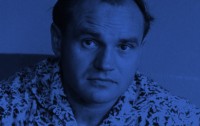Musica Concertante (1958) for chamber orchestra
Kazimierz Serocki’s Musica concertante is a piece directly connected with the composer’s first trip to the International Summer Course for New Music in Darmstadt. In 1957 Serocki became very interested in the idea of “treating numbers as a form-building element” (Kazimierz Serocki, Komponisten-Selbstportrait, unpublished typescript, 1965, p. 5). This inspired a piece – dedicated to Stanisław Wisłocki – premiered during the Summer Course the following year (1958). It was the first presentation of new Polish music there.
Serocki builds his Musica concertante out of seven short movements, each of which has a different instrumental line-up, with the culmination coming in movement four involving nearly all instruments in the ensemble (4 brass instruments, 2 harps, strings and 6 percussion instruments). The basic principle of the serial structure applied here is an “inversion of all parameters, from the smallest formal cells to the whole form” (Ibid.). This means that around the central, fourth movement are placed the other movements in a symmetrical manner, like a model and its mirror image. The last movement mirrors the first, the sixth – the second and the fifth – the third. The symmetry concerns primarily the choice of forms of the twelve-note series and the metre.
Yet these sophisticated serial relations cannot really be perceived. Instead, listeners of Musica concertante experience a pointillist dispersion of the sound material and its “multitude of colours”. As Joseph Häusler has noted, the second and sixth movements of Serocki’s piece have the same instrumentation as Pierre Boulez’s Bourreaux de solitude cycle from Marteau sans maître (Josef Häusler, Kazimierz Serocki, LP booklet Wergo 60018).
It is an interesting suggestion, for Musica concertante was undoubtedly Serocki’s creative polemic with serialism, an in-depth test of its possibilities and usefulness for his own needs. It ended in disappointment, however, because the composer saw that the mechanisms of the serial technique contradicted the laws of perception. They also caused a number of problems for the performers, contributing to a conflict between the composer and the musicians, who were unable to put his intention into practice. Therefore, Serocki decided to devote his attention to new ways of musical notation and a search for a composition formula that would create more friendly conditions in which listeners could experience new music.



